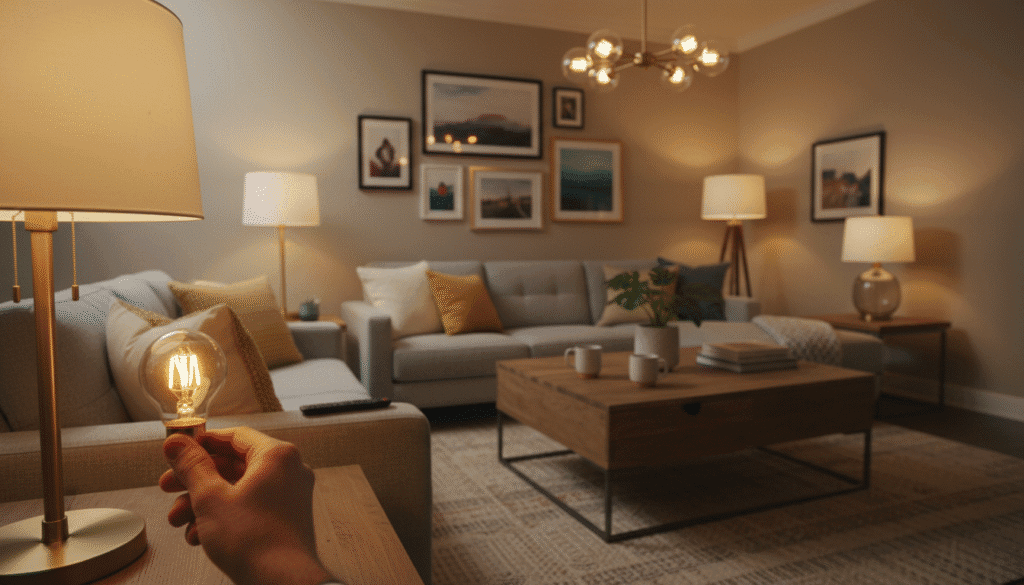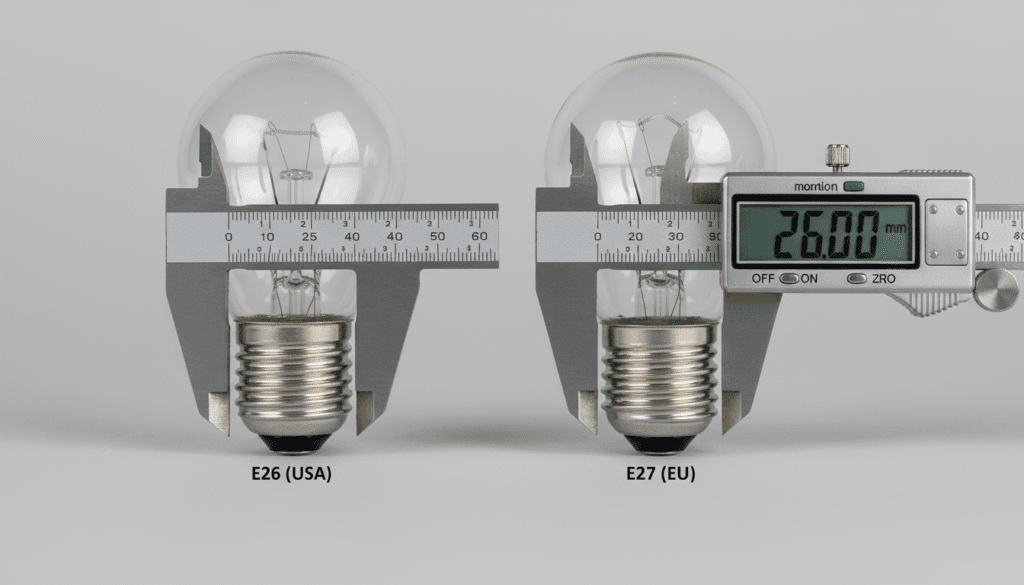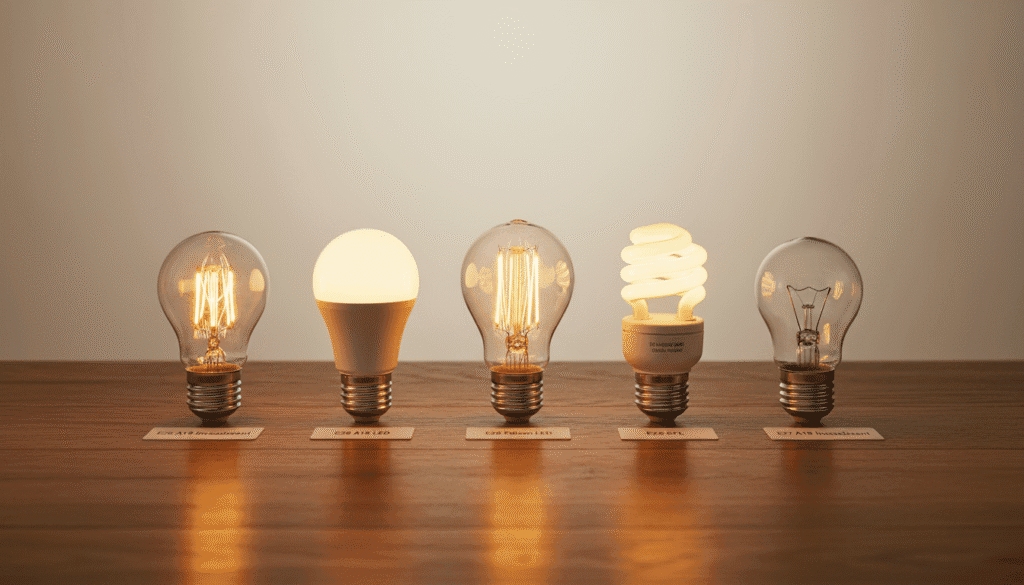I still remember standing in a hardware aisle one evening, holding two boxes that looked identical one said “E26 bulb,” and the other said “E27 bulb.” I stared at them, completely lost, wondering if I was about to waste money on the wrong light. If that’s ever happened to you, trust me, you’re not alone. Lighting labels can be confusing, but once you understand what those numbers mean, you’ll never buy the wrong bulb again.
This simple guide will clear up what an E26 bulb really is, why it’s called “standard,” how it differs from E27 and A19 types, and what you should look for before replacing or upgrading your lights. By the end, you’ll be able to walk into any store and know exactly which bulb your fixture needs no guesswork, no frustration.
What Makes the E26 Bulb So Common?
The E26 bulb is practically the “default” light bulb in most U.S. homes. You’ve probably used dozens of them without even realizing it. The letter “E” stands for Edison screw base (named after Thomas Edison), and the number “26” simply means the base is 26 millimeters wide. That’s it it’s not a mysterious code, just a measurement.
The E26 bulb base is used in everything from table lamps and ceiling fixtures to bathroom mirrors and porch lights. If you live in the U.S., it’s almost guaranteed that your home fixtures are designed for this type. The standard voltage for these bulbs is 120V, which fits North American electrical systems perfectly.
What makes E26 bulbs even more popular is their simplicity. They twist right into place no adapters, no special fittings. And since the E26 light bulb design has been around for decades, nearly every modern lighting technology LED, CFL, smart bulbs is made in this size.
Is E26 a Standard Bulb?

Yes, absolutely. The E26 bulb is the standard base size for most lighting fixtures in the United States. Whenever a manufacturer labels something as “standard bulb” or “standard socket,” it’s referring to E26.
It’s like the universal language of light fixtures here. I still remember helping my friend redo his old study room. We changed all the lamps, but not once did we have to check the socket type every single one took an E26 light bulb. That’s how common it is.
One thing to keep in mind, though: while E26 is the base standard, the shape of the bulb can differ. You’ll often see combinations like A19, G25, or ST64 paired with E26. The number after the letter (A, G, ST) simply describes the bulb’s shape or look not the base type.
So, next time you see “A19 E26 LED bulb” on a box, now you know A19 is the shape, and E26 is the base that screws into your fixture.
Are E26 and E27 Bulbs the Same?

This one confuses almost everyone at some point. Technically, E26 and E27 are not exactly the same, but they’re so close that you can usually use them interchangeably.
Here’s the difference:
- E26 bulbs have a 26mm base and are standard in the U.S. and Japan.
- E27 bulbs have a 27mm base and are standard in Europe and many other regions.
The one-millimeter difference is so small that most fixtures can handle either. In real-world use, an E26 bulb fits snugly into an E27 socket, and vice versa. The only thing to be careful about is voltage. E26 bulbs are designed for 120V, while E27 bulbs are typically made for 220–240V. Mixing them without checking voltage can lead to flickering or short lifespan.
So if you live in the U.S., stick with E26 bulbs. If you ever move abroad or buy lights from an international seller, double-check that it’s rated for 120V use.
Are E26 and A19 the Same?

Not quite, but this is where most of the confusion happens. The E26 refers to the base, while A19 refers to the shape of the bulb.
Think of it like shoes. “E26” is the shoe size, while “A19” is the shoe style. Both matter, but for different reasons.
The A19 shape is that familiar, slightly rounded bulb shape that’s been around forever the one you draw when you doodle a light bulb. Most A19 bulbs in the U.S. use an E26 bulb base, which is why the terms often appear together as “A19 E26 light bulb.”
So, if you’re replacing a bedside lamp bulb and the old one says “A19,” look for another E26 bulb in the same shape for a perfect fit. You can also find other shapes like A21 or G30 with E26 bases, depending on your fixture and lighting preference.
What Is an E26 LED Bulb?

The E26 LED bulb is simply an energy-efficient version of the classic E26 bulb. Instead of a glowing filament, it uses small diodes that emit light. LEDs use far less energy often up to 80% less than old incandescent bulbs and last much longer.
The best part? You can find E26 LED bulbs in almost every color, brightness, and style imaginable. Some are dimmable, others change color with your phone, and many can be paired with smart home systems. It’s the same familiar base, just with modern technology packed inside.
I personally switched my entire house to LED E26 bulbs a few years ago. My electric bill dropped noticeably within a month, and I haven’t replaced a single bulb since. The warm white glow in the living room feels cozy, while the daylight ones in my kitchen make cooking easier.
If you’re planning to upgrade your home lighting, switching to E26 LED bulbs is one of the simplest and most effective changes you can make.
Step-by-Step: Choosing the Right E26 Bulb
Buying bulbs shouldn’t feel like solving a puzzle. Here’s a simple step-by-step process to help you pick the right one:
Step 1: Check Your Fixture
Look at your old bulb or the socket label. If it says “standard base,” that’s your green light for an E26 bulb.
Step 2: Choose the Right Brightness
Brightness is measured in lumens, not watts anymore.
- 450–800 lumens → cozy rooms or lamps.
- 1000–1600 lumens → kitchen, study, or outdoor lighting.
Step 3: Pick the Color Temperature
Warm white (2700K) feels relaxing and soft perfect for bedrooms.
Cool white (4000K–5000K) feels crisp and energizing ideal for workspaces.
Step 4: Decide Between Dimmable or Non-Dimmable
If your lamp has a dimmer switch, make sure you buy dimmable E26 bulbs. Non-dimmable LEDs can flicker on those switches.
Step 5: Check Enclosure Rating
Some LEDs can’t handle heat buildup in enclosed fixtures. If your light is in a closed shade, check that the bulb says “enclosed fixture rated.”
Follow these five steps, and you’ll never grab the wrong E26 light bulb again.
Practical Tips for Getting the Most Out of E26 Bulbs
- Stick with trusted brands. Cheap bulbs burn out faster and sometimes flicker.
- Mix color temperatures carefully. Warm and cool whites can clash in the same room.
- Clean bulbs occasionally. A dusty E26 LED bulb can lose up to 20% of its brightness.
- Don’t mix voltage ratings. It’s one of the most common mistakes always check for 120V labeling in the U.S.
- Recycle old bulbs properly. CFLs and older LEDs shouldn’t go into the trash. Most local stores have recycling bins.
And one more thing: if you love cozy evening light but don’t want yellow tones, look for “soft white” or “2700K–3000K” on the label. It gives that warm glow without feeling too dim.
FAQs
Q1: Is the E26 bulb used worldwide?
Not exactly. It’s common in the U.S. and Japan, but other regions like Europe mainly use E27.
Q2: How long does an E26 LED bulb last?
Typically between 15,000 and 25,000 hours. That’s several years of daily use.
Q3: Can I use an E26 bulb outdoors?
Yes, as long as it’s rated for outdoor or damp conditions. Always check the packaging.
Q4: Are E26 bulbs dimmable?
Some are, some aren’t. Look for “dimmable” on the box if you’re using a dimmer switch.
Q5: What’s the difference between E26 and E12 bulbs?
E26 is a medium base (standard). E12 is smaller often used in chandeliers or decorative fixtures.
Conclusion: Let There Be Light (and Clarity)
Lighting used to feel complicated. But once you understand what E26 bulbs really are their size, compatibility, and variations it all starts to make sense. Whether you’re upgrading to E26 LED bulbs for energy efficiency or simply replacing an old one, the process is now effortless.
So next time you’re standing in the lighting aisle, you’ll know exactly what those codes mean. Grab your E26 light bulb, screw it in, and enjoy the warm, bright satisfaction of getting it right.


